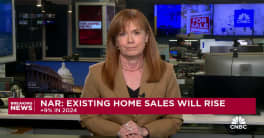In a conference call/press conference on Thursday, the Conference of State Bank Supervisors (CSBS) released its first report on loss mitigation efforts as reported by 13 major residential mortgage servicers.
Iowa Attorney General Tom Miller explained that the report grew out of a concern
dating back to last summer that the nation was facing a "foreclosure
avalanche." The AG said at that point the bank regulators and attorneys
general who were expressing that concern were looking at the impact of individual
foreclosures on the family and the community and had no idea of the collateral
damage that would later emerge from the poor underwriting standards. They were,
however, convinced that the avalanche could be mitigated by enlightened self
interest. Such self-interest should come together where the borrower could afford
to make payments in an amount that the owner of his loan could afford to accept.
A State Foreclosure Prevention Working Group was formed and met with 20 of
the largest servicers of subprime loans. Most of these servicers agreed that
loss mitigation made a lot of sense and signed on to the "enlightened self-interest"
proposition. However according to Mark Pearce, North Carolina Deputy Commissioner
of Banks, there was an immediate disconnect between what servicers
said they were doing to ameliorate the problem and what the Working Group was
hearing from borrowers and non-profits seeking to help those borrowers so the
Group moved to collect data directly from servicers to verify what was going
on. One immediate need was develop a metric of definitions so that "loss mitigation"
or "repayment plan" meant the same thing to all players.
The Group is now collecting data from 13 servicers representing 58 percent of the subprime market. Six servicers have either declined to provide information or are in negotiations to work out confidentiality concerns. Chase and Wells Fargo have declined to participate based on advice from the Office of Comptroller of the Currency which OCC has refused to change and Washington Mutual along with Chase have refused to provide data because of their participation in the Hope NOW Alliance
While the report stated that many of the servicers participating in the data collection had not yet set up the kinds of tracking systems that would allow data to slice and dice information too finely, (e.g.was the loan modification an interest rate modification, a term modification, or a reduction in the amount owed?) this first report, containing data from last October, did contain some interesting findings.
- Seven out of ten seriously delinquent borrowers are not on track for any
loss mitigation option.
The lack of contact between servicers and debtors is a major problem. In spite of creative outreach efforts and increased staffing, there is a large gap between the numbers needing help and the number receiving it. The data suggests that a rising number of loan delinquencies are swamping the increase in loss mitigation efforts.
One reporter at the press conference stated that these numbers are the mirror opposite of figures released that morning by Hope NOW that stated that 70 percent of delinquent homeowners were being reached by servicers. Conference participant refused to respond saying that they had not had a chance to look at the Hope NOW data.
� - Servicers have increased their efforts to reach and work with borrowers.
For those homeowners who are in contact with their servicers 45 percent are working toward a loan modification. Servicers are also increasingly willing to work out longer-term changes to the loan rather than short-term repayments or forbearance agreements.
� - Payment resets on hybrid ARMs have not yet been a driving force in foreclosures.
The results indicate that a significant percentage of subprime adjustable rate loans go delinquent before the first rate reset indicating weak underwriting or mortgage fraud (i.e. misstating income or owner occupancy status) . That so many homeowners are already struggling before their rates reset gives increased urgency to addressing hybrid ARMs before those payment shock triggers additional foreclosures.
� - Homeowners are helping themselves.
The October data showed that most of the delinquent loans resolved that month occurred when the homeowners were able to catch up on back payments. "As of October, actions by homeowners, not servicers, have prevented the most foreclosures."
� - The refinance option has nearly evaporated.
Where what the Working Group called "serial refinancing" was the primary way that the mortgage industry and homeowners managed delinquencies in the past, the report stressed that the industry will not be able to refinance its way out of the current crisis unless there are dramatic changes in available loan products or home prices.
The October data looked at 205,270 instances of loan mitigation outcomes closed that month to determine the methods used. Reinstatement or account brought current accounted to 73.33 percent of those outcomes, i.e. homeowners helping themselves as stated above. Loan modifications and repayment plans made up just under 10 percent each of the total and refinancing or paid in full (which could be from a full payoff home sale) 4.2 percent. Short sales, deeds in lieu of foreclosure, and forbearance made up only 2 percent each of the outcomes.
The report and those participating in the conference call touched briefly on the need for "fast track" modifications. This would be a system which would allow loans to be dealt with by type of loan or with automated loan evaluation systems. An example of the fast track concept would be the current loan rate freeze put in place recently where the whole category of loans that are about to reset but are not delinquent are identified as a cohort that can be helped with an almost one-solution-for-all movement. The report states that "A continued insistence that each delinquent loan needs intensive one-on-one attention will hamstring efforts to prevent large numbers of foreclosures. As a result, millions of homeowners will lose their home unnecessarily, impacting not only those families, but their neighbors and communities as well."







